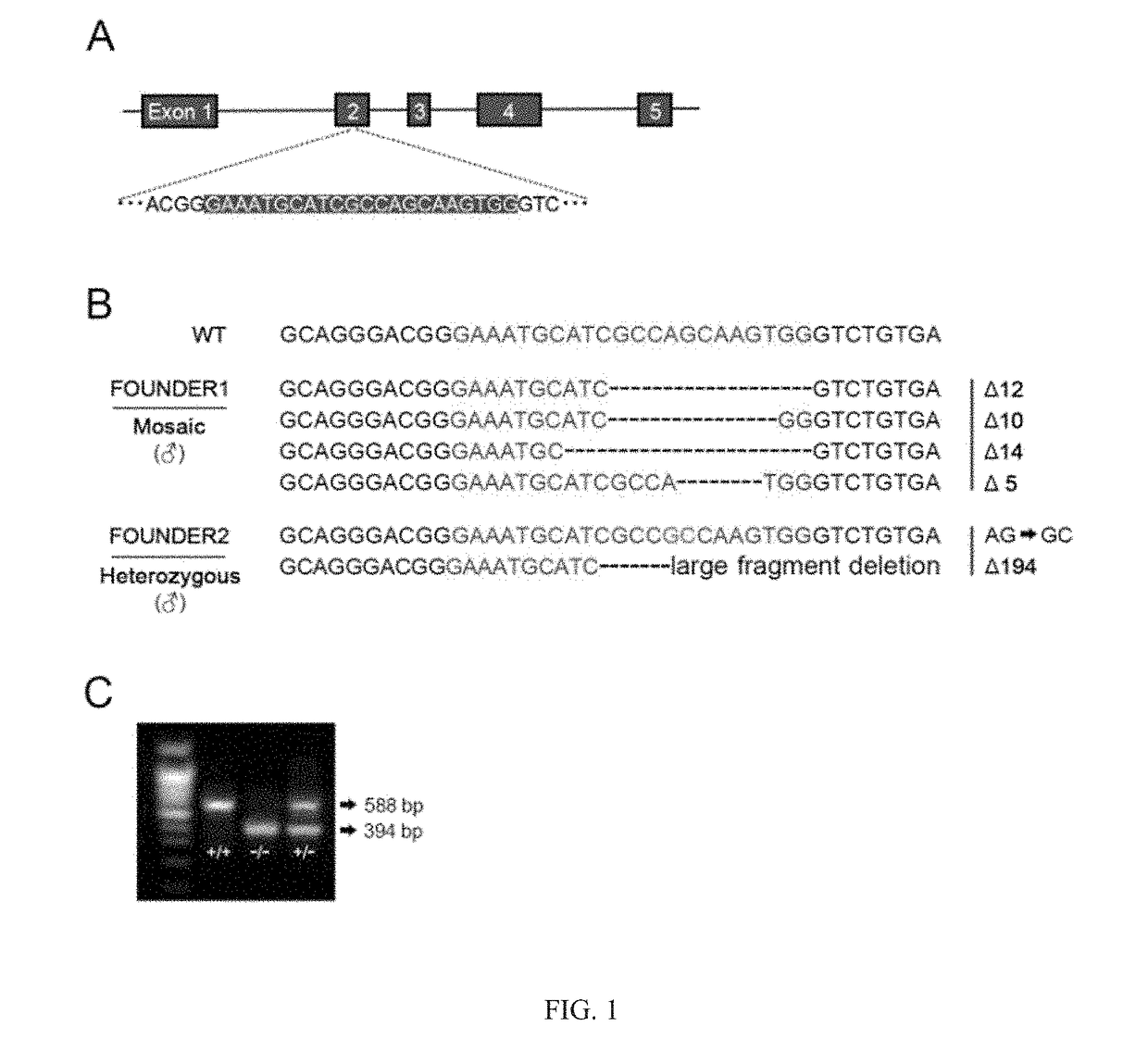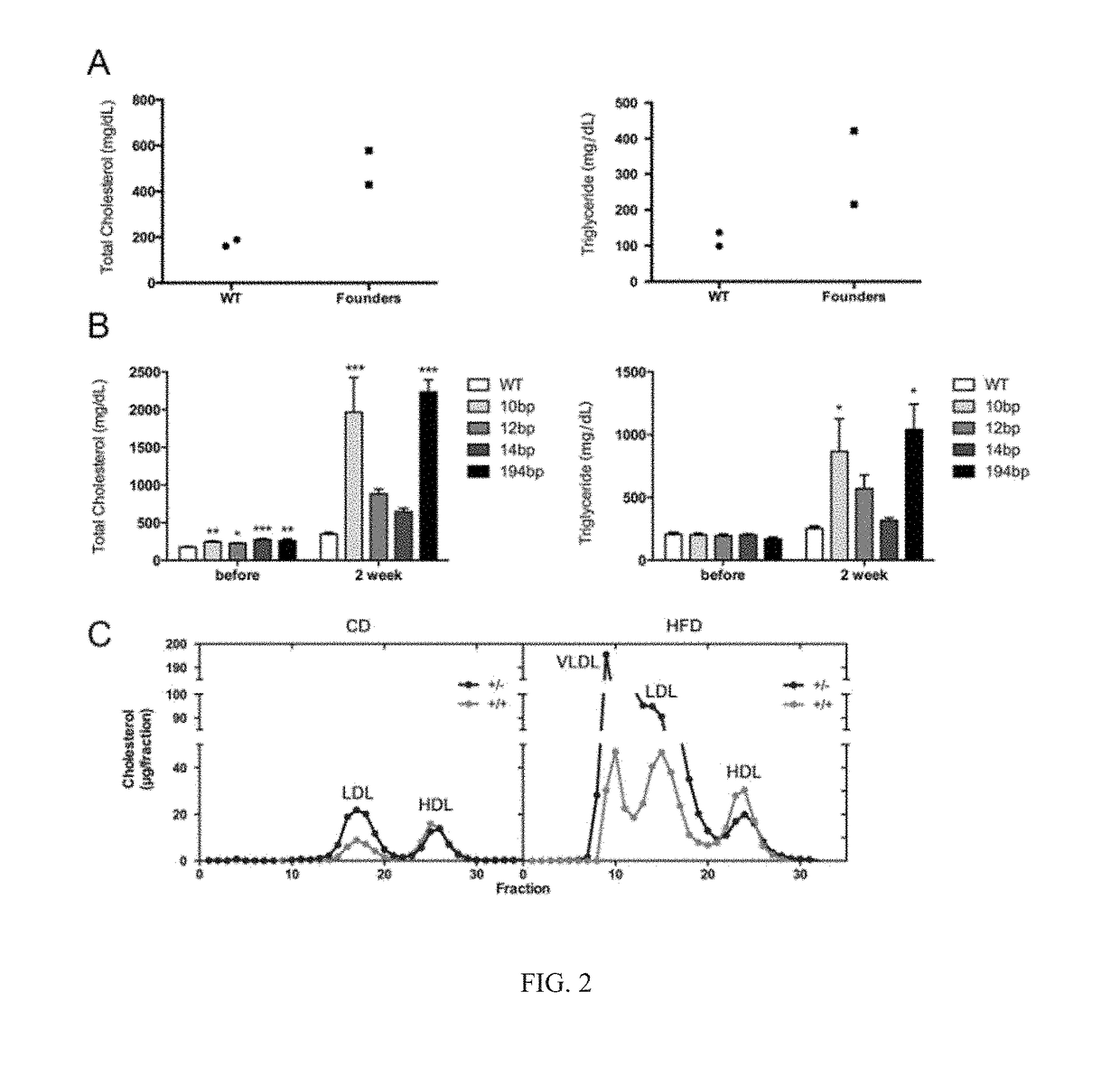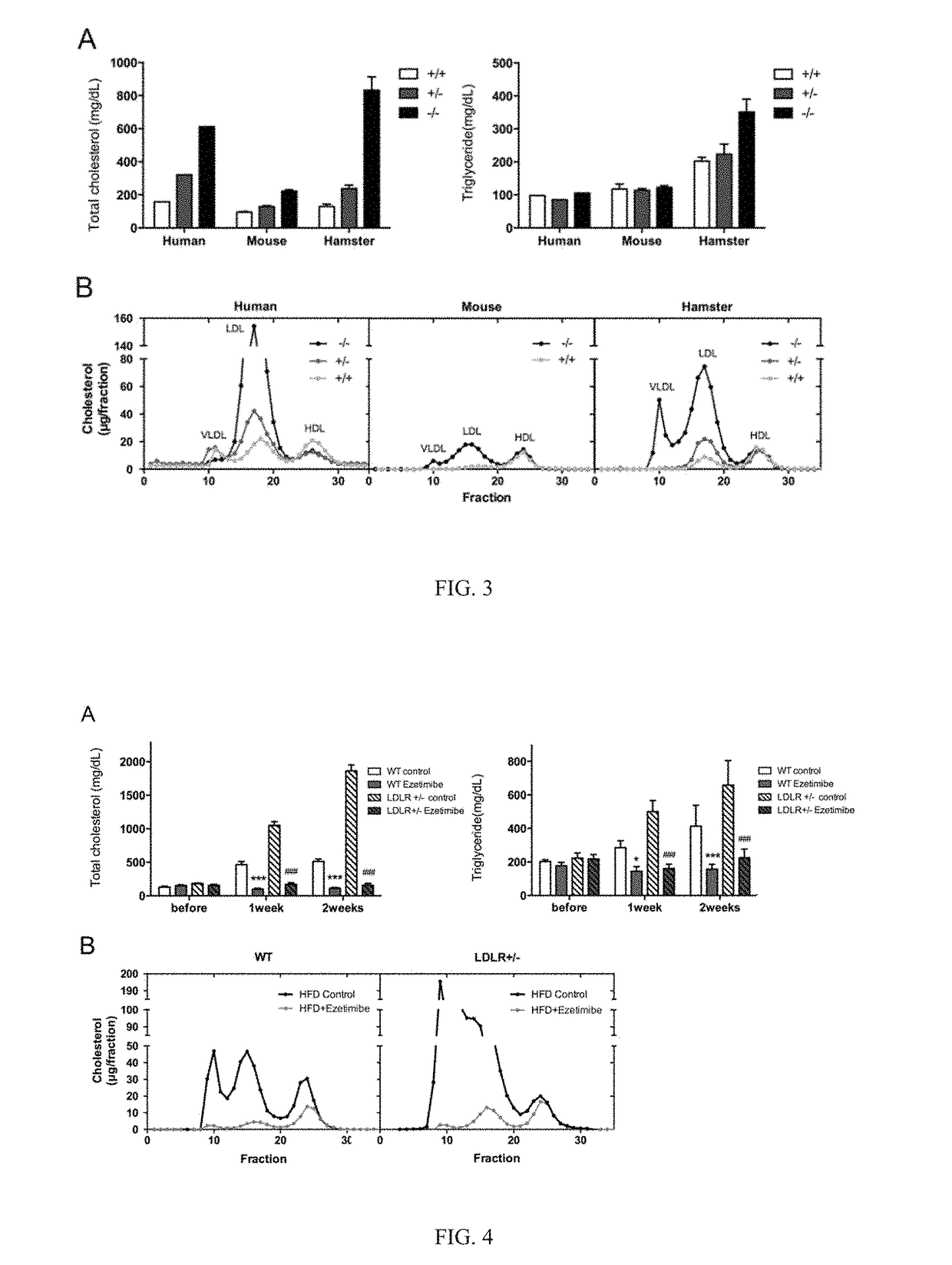Ldl receptor gene knockout, genetically-engineered hamster
a technology of ldl receptor and hamster, which is applied in the field of genetically engineered animals, can solve the problems of lack of underlying etiology and pathophysiological basis, and inability to simulate the natural pathogenesis of human coronary heart disease and stroke. , to achieve the effect of significant increase in the blood lipid level of the hamster
- Summary
- Abstract
- Description
- Claims
- Application Information
AI Technical Summary
Benefits of technology
Problems solved by technology
Method used
Image
Examples
example 1
[0038]Hamster (golden Syrian hamster) is a small rodent that is widely used in various research areas, including oncology, virology, diabetes, and cardiovascular disease (7-10). In terms of glycolipid metabolism, hamster has characteristics similar to that of human that mouse and rat do not have: highly expressed cholesteryl ester transfer protein (CETP) (11), editing enzymatic activity of apolipoprotein B only in small intestine and high-fat diet induced complex hyperlipidemia (12, 13). Therefore, hamster is likely to become the most ideal small animal model of hyperlipidemia for the study of the pathogenesis and drug efficacy of hyperlipidemia and its complications.
[0039]We have recently made a major breakthrough in the technology of hamster embryo manipulation and successfully prepared the first genetically-engineered hamster in the world (14). On this basis, this study used CRISPR / CAS9 gene editing technology (15, 16) to construct LDL-R knockout hamsters, compared their phenotyp...
PUM
| Property | Measurement | Unit |
|---|---|---|
| humidity | aaaaa | aaaaa |
| temperature | aaaaa | aaaaa |
| concentration | aaaaa | aaaaa |
Abstract
Description
Claims
Application Information
 Login to View More
Login to View More - R&D
- Intellectual Property
- Life Sciences
- Materials
- Tech Scout
- Unparalleled Data Quality
- Higher Quality Content
- 60% Fewer Hallucinations
Browse by: Latest US Patents, China's latest patents, Technical Efficacy Thesaurus, Application Domain, Technology Topic, Popular Technical Reports.
© 2025 PatSnap. All rights reserved.Legal|Privacy policy|Modern Slavery Act Transparency Statement|Sitemap|About US| Contact US: help@patsnap.com



